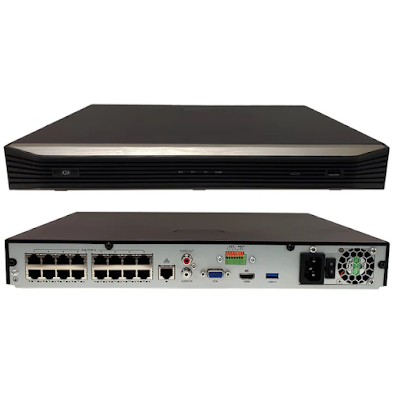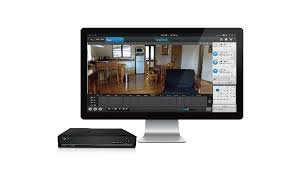WHAT IS AN NVR (Network Video Recorder)
WHAT IS AN NVR (Network Video Recorder)
NVR stands for (Network Video Recorder). It's a specialized computer system designed to record and store security video footage captured by IP cameras (Internet Protocol cameras). Unlike DVRs (Digital Video Recorders) used in analog CCTV systems, NVRs deal with digital video data transmitted over a network connection (Ethernet cable or Wi-Fi).
Let look at the breakdown of NVRs and their key functions:
Recording and Storage:
NVRs receive digital video streams from IP cameras on the network.
The video footage is recorded onto internal hard drives or external storage devices like USB drives or Network Attached Storage (NAS).
NVRs offer various recording options, including continuous recording, motion-triggered recording, and scheduled recording.
Benefits of NVRs over DVRs:
Superior Image Quality: NVRs can handle high-definition (HD) or even 4K resolution video from IP cameras, providing much sharper and clearer images compared to the standard definition (SD) limitations of DVRs.
Scalability: Adding new IP cameras to your system is simpler with NVRs. They connect to the network, eliminating the need for complex additional cabling required for analog systems.
Remote Access: NVRs allow remote access to live and recorded footage from anywhere with an internet connection through a web browser or mobile app. DVRs typically require physical access to the recorder for playback.
Advanced Features: NVRs can offer a wider range of features compared to DVRs, including:
Video Analytics: Ability to detect specific events like people or vehicles entering restricted zones.
Integration: Can integrate with other smart home devices or security systems for a more comprehensive solution.
Choosing an NVR:
Consider these factors, hen selecting an NVR.
The Number of Cameras: Choose an NVR with enough channels to support the number of cameras in your system and potential future expansion.
The Storage Capacity: Consider the recording resolution, frame rate, and desired recording duration to determine the required storage capacity.
The Recording Features: Decide on the recording modes (continuous, motion-triggered, scheduled) you need.
The Remote Access: Ensure the NVR allows remote access through a user-friendly web interface or mobile app.
The Security Features: Look for features like strong encryption and user access controls to protect your video data.
Type of an NVR
There are two main types of NVRs (Network Video Recorders) categorized based on how they provide power to the IP cameras they connect to:
The PoE NVR (Power over Ethernet NVR):
Function: This type of NVR integrates Power over Ethernet (PoE) technology. PoE allows the NVR to transmit both data and electrical power to PoE-compatible IP cameras over a single Ethernet cable.
Benefits:
Simplified Installation: Eliminates the need for separate power supplies for each camera, reducing cabling clutter and simplifying installation.
Cost-Effective: Can be more cost-effective in the long run, especially for larger systems with many cameras, as you don't need to purchase separate power supplies.
Scalability: Easier to expand your system by adding more PoE cameras without worrying about additional power outlets.
The Non-PoE NVR:
Function: This NVR lacks built-in PoE functionality. These NVRs require separate power supplies for each IP camera connected to them.
Applications:
Suitable for: May be suitable for smaller systems with a few IP cameras already equipped with their own power supplies or for situations where existing power outlets are readily available near camera locations.
Cost-Effective (initially): The initial cost of the NVR itself might be slightly lower compared to a PoE NVR.
In conclusion, NVRs are the backbone of modern IP camera security systems, offering a reliable and feature-rich solution for recording, storing, and managing your video surveillance footage.



Comments
Post a Comment